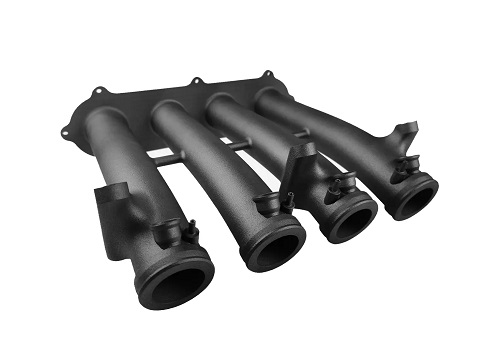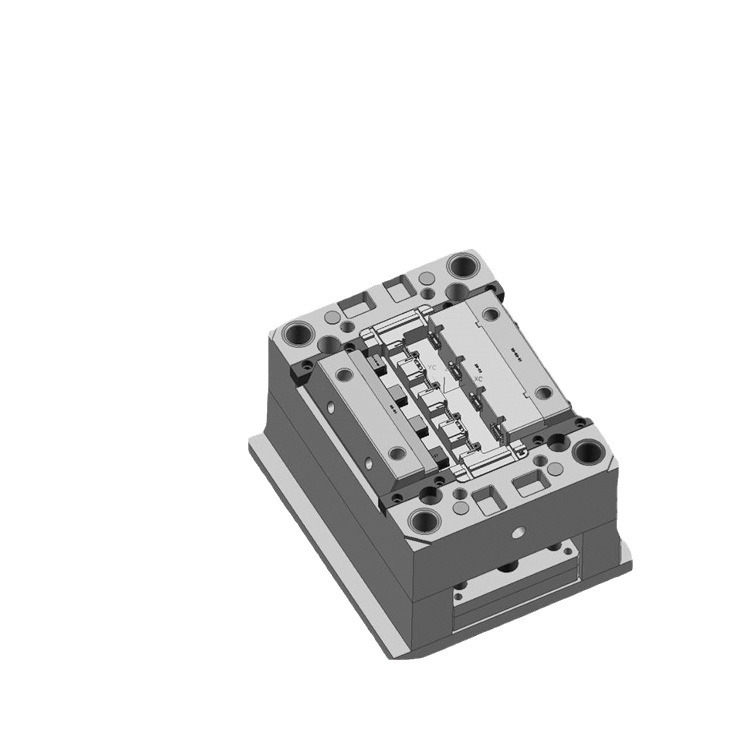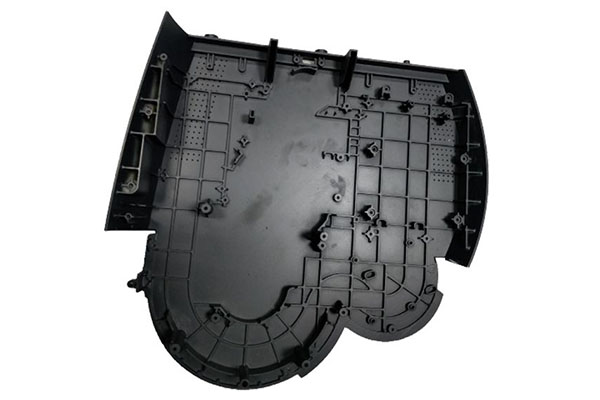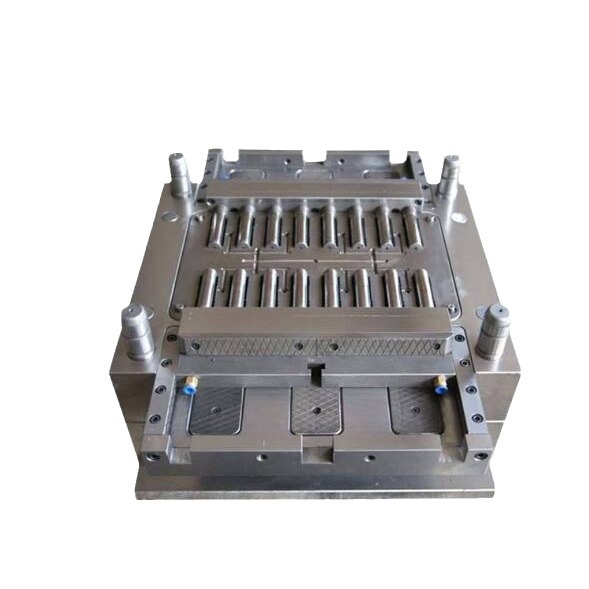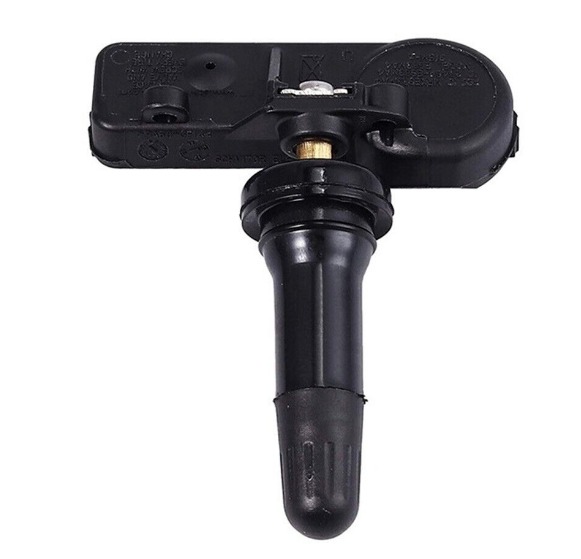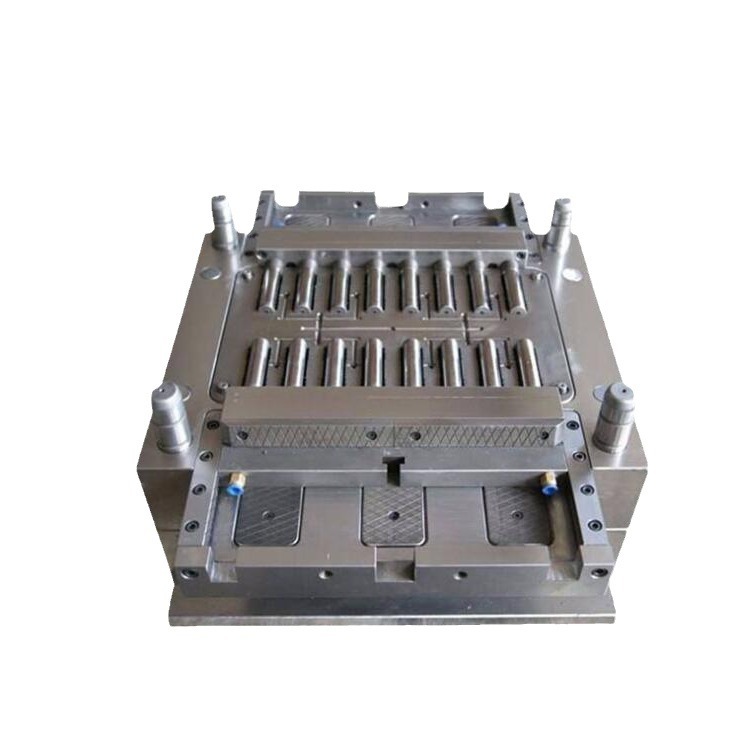Introduction
The Evolution of Automotive Manufacturing
The automotive manufacturing industry has come a long way since its inception. In the early days, cars were mainly made of metal, with production processes that were often time - consuming and labor - intensive. The first automobiles were hand - built, and the production volume was extremely low. For example, in the late 19th century when cars were just emerging, manufacturers like Benz produced only a handful of vehicles each year.
As time passed, the introduction of the assembly line by Henry Ford in 1913 revolutionized the industry. This innovation allowed for mass production, significantly reducing the cost of cars and making them more accessible to the general public. However, metal - based manufacturing still faced challenges such as high weight, which affected fuel efficiency, and complex shaping processes for intricate parts.
The Rise of Plastic Injection Car Parts
In the mid - 20th century, plastic injection technology started to gain traction in the automotive sector. Initially, plastic parts were used sparingly, mainly in non - critical areas due to concerns about their durability and strength. But as material science advanced and injection molding techniques improved, plastic injection car parts began to play a more prominent role.
Today, plastic injection car parts are an integral part of modern automotive manufacturing. They can be found in almost every aspect of a vehicle, from the interior components to the exterior body panels and even in some crucial mechanical parts. In fact, on average, about 20% - 30% of a modern car's components are made of plastic, and this percentage is only expected to grow as automotive manufacturers strive to meet new demands for fuel efficiency, design flexibility, and cost - effectiveness.
Types of Plastic Injection Car Parts in Automotive
Interior Components
Plastic injection molding has revolutionized the manufacturing of interior car components. Dashboards, for instance, are commonly made using this process. They are often crafted from materials like polypropylene (PP) or acrylonitrile - butadiene - styrene (ABS). These plastics offer a combination of cost - effectiveness, ease of molding into complex shapes, and decent heat resistance. Dashboards need to house various instruments, such as speedometers, tachometers, and warning lights. The injection - molded plastic allows for precise positioning of these components, ensuring a clean and organized layout for the driver.
Seats also have many plastic injection parts. The seat frames are sometimes made of reinforced plastics, which can reduce weight while maintaining structural integrity. For example, glass - fiber - reinforced polyamide is a popular choice. It can support the weight of the occupants and withstand the forces exerted during driving, braking, and acceleration. Additionally, the seat adjustment mechanisms, including gears and levers, are often injection - molded plastics. These small but crucial parts need to be precise in their dimensions to ensure smooth and reliable operation, allowing passengers to find their most comfortable seating position.
Interior panels, like door panels and roof liners, are another area where plastic injection parts shine. Door panels often integrate multiple functions, such as armrests, storage compartments, and speaker mounts. Injection molding enables the creation of these complex shapes in one piece, reducing assembly time and cost. Roof liners made of lightweight plastics not only provide insulation but also contribute to the overall aesthetic of the interior. They can be easily shaped to fit the curvature of the vehicle's roof, and the use of different plastic materials allows for customization in terms of color, texture, and acoustic properties.
Exterior Parts
Exterior plastic injection car parts play a vital role in both the appearance and functionality of vehicles. Bumpers are a prime example. Most modern bumpers are made from high - impact plastics, such as polypropylene (PP) or a blend of PP and elastomers. These materials offer excellent energy - absorbing capabilities in the event of a collision. In a minor fender - bender, the plastic bumper can deform and then return to its original shape, reducing the need for costly repairs. They also provide design flexibility, allowing manufacturers to create aerodynamic and stylish shapes. For instance, some bumpers are designed with integrated spoilers or air dams to improve the vehicle's handling and fuel efficiency.
Car lamp housings are typically injection - molded from heat - resistant plastics like polycarbonate (PC). PC has high optical clarity, which is essential for ensuring that the light emitted by the bulbs is not distorted. It also has good impact resistance, protecting the delicate lighting components inside. Additionally, PC can withstand the high temperatures generated by the bulbs, preventing the housing from warping or melting over time. This ensures the longevity and proper functioning of the lights, which are crucial for driving safety, especially at night or in adverse weather conditions.
Body trim strips are used to enhance the visual appeal of a car. These are often made of plastic through injection molding. They can be designed to match the color and style of the vehicle, adding a touch of elegance. Some trim strips are also functional, such as those that act as weather seals around doors and windows. Injection - molded plastic trim strips can be precisely shaped to fit the contours of the body, providing a seamless and finished look. They are also more corrosion - resistant than their metal counterparts, which is important for maintaining the vehicle's appearance over the long term.
In the mechanical and engine - related areas, plastic injection parts are making significant inroads. Intake manifolds are an important example. Many modern engines use plastic intake manifolds instead of traditional metal ones. Plastics like nylon - based composites are preferred due to their lightweight nature, which helps in reducing the overall weight of the engine. This, in turn, improves fuel efficiency. Plastic intake manifolds also have smooth inner surfaces, which minimize air resistance as the air - fuel mixture is drawn into the engine cylinders. This results in better combustion efficiency and increased engine performance. For example, compared to metal intake manifolds, plastic ones can reduce the amount of turbulence in the air - fuel flow, leading to more consistent engine operation.
Engine covers are often made of injection - molded plastics. They serve multiple purposes, such as protecting the engine components from dirt, debris, and moisture. They also help in reducing engine noise, creating a quieter driving environment. Plastics used for engine covers are usually heat - resistant and can withstand the high temperatures generated by the engine. They can be molded into various shapes to fit different engine configurations, and their lightweight nature doesn't add much to the vehicle's weight. Additionally, engine covers can be designed with aesthetically pleasing finishes, enhancing the overall look of the engine bay.
The Plastic Injection Process
Step - by - Step Explanation
- Material Preparation: First, the appropriate plastic resin is selected based on the requirements of the car part. For example, if it's an exterior part that needs high impact - resistance, polypropylene (PP) or its blends might be chosen. The plastic resin usually comes in pellet form. If the plastic has hygroscopic properties, like nylon, it must be dried thoroughly. For instance, nylon may need to be dried at around 80 - 100°C for several hours to remove moisture. Moisture in the plastic can cause defects such as bubbles and surface imperfections during the injection process.
- Melting: The dried plastic pellets are fed into the hopper of the injection molding machine. From there, they enter the heated barrel. The barrel contains a screw that rotates, pushing the pellets forward. As the pellets move along the barrel, they are heated by external heaters and the frictional heat generated by the screw's rotation. Different plastics have different melting temperatures. For example, polyethylene (PE) typically melts in the range of 110 - 130°C, while polycarbonate (PC) melts at around 220 - 260°C. The temperature is carefully controlled to ensure the plastic reaches a uniform, molten state with the right viscosity for injection.
- Injection: Once the plastic is fully melted, the screw moves forward rapidly, injecting the molten plastic under high pressure into the closed mold cavity. The mold cavity is designed to have the exact shape of the desired car part. The injection pressure can range from 50 - 200 MPa, depending on factors like the complexity of the part, the plastic material used, and the size of the mold. For a small, simple interior component, a lower injection pressure might be sufficient, while a large, complex exterior panel would require a higher pressure to ensure complete filling of the mold.
- Cooling and Solidification: After the mold is filled with the molten plastic, the cooling process begins. The mold is usually equipped with a cooling system, which can be water - cooled channels running through the mold. As the plastic cools, it solidifies and takes on the shape of the mold cavity. The cooling time is crucial and depends on the thickness and material of the part. Thicker parts require longer cooling times. For example, a thick engine cover might need 30 - 60 seconds to cool properly, while a thin interior trim piece could cool in 5 - 10 seconds.
- Ejection: Once the plastic part has solidified enough, the mold opens, and the ejection system, which typically consists of ejector pins, pushes the part out of the mold. The part is then ready for further inspection and post - processing, such as trimming excess plastic (flash), sanding, or painting.
Key Factors Affecting Quality
- Temperature:
- Melt Temperature: If the melt temperature is too low, the plastic will have a high viscosity, making it difficult to fill the mold completely. This can lead to short shots (incomplete parts) and cold flow marks on the surface. For example, if the melt temperature of ABS is set below 200°C, it may not flow smoothly into the intricate parts of the mold. On the other hand, if the melt temperature is too high, the plastic may degrade, losing its mechanical properties and potentially causing discoloration or gas evolution.
- Mold Temperature: A low mold temperature can cause rapid cooling of the plastic near the mold walls, resulting in a high - stress layer and possible warping or cracking of the part. For a large plastic bumper, a low mold temperature might cause the outer surface to cool too quickly, while the inner part is still hot, leading to internal stress and deformation. A high mold temperature, however, can increase the cycle time and may also cause the part to stick to the mold, making ejection difficult.
- Optimization: To optimize, it's essential to use temperature - controlling devices accurately. For melt temperature, the heating zones of the injection barrel should be calibrated regularly. For mold temperature, a well - designed cooling system with proper coolant flow rate and temperature control should be in place. For example, using a chiller to maintain a stable mold temperature within ±2°C can significantly improve part quality.
- Pressure:
- Injection Pressure: Insufficient injection pressure won't be able to overcome the resistance of the molten plastic flowing through the runner system and into the mold cavity, resulting in incomplete filling. If the injection pressure for a car lamp housing is too low, the thin - walled areas may not be filled properly. Excessive injection pressure, though, can cause the plastic to over - pack the mold, leading to high internal stress, flash (excess plastic around the mold edges), and possible damage to the mold.
- 保压压力 (Hold - Pressure): The hold - pressure is applied after the mold is filled to compensate for the shrinkage of the plastic as it cools. If the hold - pressure is too low, the part may have sink marks (shallow depressions on the surface) due to insufficient material to fill the space created by shrinkage. If it's too high, it can cause excessive stress and deformation.
- Optimization: The injection pressure profile should be adjusted according to the part's geometry. For parts with thick and thin sections, a multi - stage injection pressure can be used, starting with a lower pressure for the initial fill and then increasing it for the thinner areas. The hold - pressure should be set based on the plastic material's shrinkage characteristics. For example, highly crystalline plastics like polypropylene may require a relatively high hold - pressure to reduce shrinkage.
- Injection Speed:
- Fast Injection Speed: A fast injection speed can cause turbulence in the molten plastic flow. This turbulence can trap air bubbles inside the part, creating voids or weakening the part's structure. It can also lead to weld lines (visible lines where two streams of plastic meet) being more prominent, especially in parts with complex geometries. For a dashboard with multiple intersecting features, a fast injection speed may cause highly visible weld lines that affect the aesthetic and mechanical properties.
- Slow Injection Speed: If the injection speed is too slow, the plastic may start to cool and solidify before the mold is completely filled, resulting in short shots. This is especially a problem for large parts or those with long flow paths.
- Optimization: The injection speed should be adjusted based on the part's complexity and the plastic's flow characteristics. For parts with thin walls, a faster injection speed may be required to ensure quick filling before the plastic cools too much. For parts with simple geometries and thick walls, a slower injection speed can be used to reduce the risk of turbulence. A trial - and - error approach, combined with simulation software, can help in determining the optimal injection speed.
Yigu Technology's Perspective
As a non - standard plastic metal products custom supplier, Yigu Technology recognizes the significant impact of plastic injection car parts on automotive manufacturing. We understand that each automotive project has unique requirements, whether it's for interior, exterior, or mechanical components.
Our strength lies in our ability to meet diverse customer needs. We offer a wide range of plastic materials and advanced injection molding techniques, allowing us to create high - quality custom plastic injection car parts. For example, when it comes to complex - shaped interior panels with specific color and texture requirements, we can precisely match the design specifications. We also have strict quality control measures in place. From the selection of raw materials to the final inspection of the finished products, every step is carefully monitored to ensure that the parts meet or exceed industry standards. Our commitment to quality and customization has enabled us to build long - term partnerships with automotive manufacturers, contributing to the innovation and development of the automotive industry through our reliable plastic injection solutions.
FAQs
What are the common materials used for plastic injection car parts?
Common materials include polypropylene (PP), which is lightweight, cost - effective, and has good chemical resistance, making it suitable for interior components like dashboards and exterior parts such as bumpers. Polycarbonate (PC) is another popular choice, especially for car lamp housings, due to its high optical clarity, heat resistance, and impact resistance. Acrylonitrile - butadiene - styrene (ABS) is often used for interior panels as it combines good strength, toughness, and processability, allowing for complex shapes to be easily molded. Nylon - based composites are favored for mechanical parts like intake manifolds because of their high strength - to - weight ratio and heat resistance.
How can I ensure the quality of plastic injection car parts?
Firstly, choose a reliable and experienced supplier like Yigu Technology. A good supplier will have a reputation for quality and a track record of meeting industry standards. Secondly, closely monitor the production process. This includes ensuring proper material preparation, such as accurate drying of hygroscopic plastics. During the injection process, maintain strict control over temperature, pressure, and injection speed. Finally, implement a rigorous quality inspection system. Use techniques like dimensional inspection to check if the parts meet the design specifications, and conduct mechanical property tests to ensure the parts can withstand the required forces during use.
Are plastic injection car parts environmentally friendly?
Plastic injection car parts have mixed environmental impacts. In terms of recyclability, many common plastics used in automotive applications, such as polypropylene and polycarbonate, are recyclable. Recycling these plastics can reduce the demand for virgin materials and lower energy consumption compared to producing new plastics from raw materials. However, not all plastic injection car parts are biodegradable. Some plastics, especially those made from petrochemical - based polymers, can persist in the environment for a long time if not properly recycled. To improve environmental friendliness, automotive manufacturers are increasingly exploring the use of bio - based plastics, which are derived from renewable sources and may be more biodegradable, and also enhancing recycling programs for plastic car parts.
